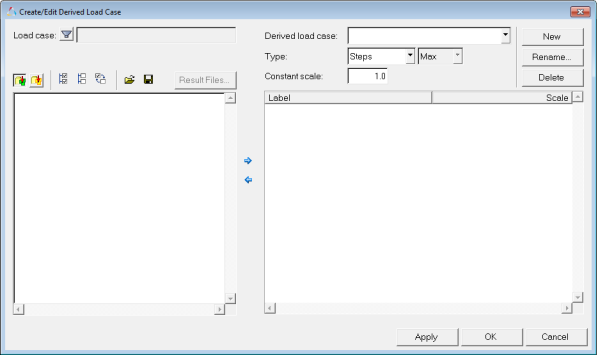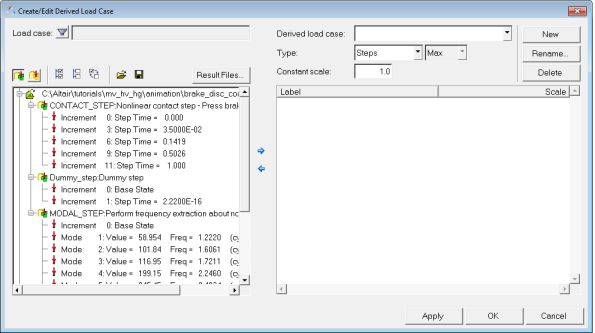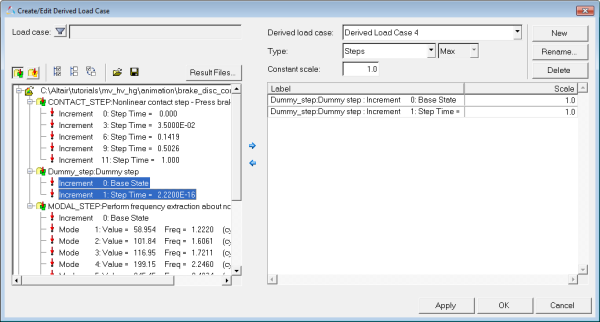HV-3070: Create Derived Loadsteps
Learn how to create a derived loadstep from existing loadsteps and animate a derived loadstep.
- Right-click in the Results Browser and select .
OR
- Click the Derived Load Cases button
 on the Result toolbar.
on the Result toolbar.
OR
- Select from the menu bar.

Figure 1.
This utility allows you to create new loadsteps, referred to as derived loadsteps, using existing loadsteps and their simulation steps. Derived loadsteps are saved to the session file. Using this utility, you can also create linear superposition and envelope loadsteps. See the Derived Load Cases topic for additional information.

 , to append the increments to the new loadstep.
, to append the increments to the new loadstep.

 .
.